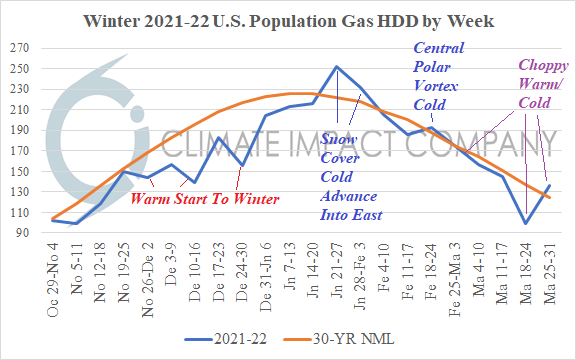
A Review of U.S. Winter 2021-22
04/10/2022, 12:59 pm EDT
U.S. Summertime in a 3rd Consecutive La Nina Year: Hostile drought!
05/12/2022, 2:34 pm EDTDiscussion: Heavy anomalous convection possibly related to a stagnant Madden Julian oscillation (MJO) produced widespread heavy rains to the south of India and eastward to far Southeast Asia and farther east to the Philippines during MAR/APR 2022 (Fig. 1). The semi-permanent heavy convection released latest heat to the poleward atmosphere causing a titanic upper-level high-pressure ridge to form (Fig. 2). Beneath the upper-level ridge, anomalous heat became historic across Northern India and westward to Iran (Fig. 3). High temperatures near 120F/49C were recorded and the India April heat is considered the most intense in 122 years. The anomalous convection in the equatorial region of the central Indian ocean eastward across Indonesia was building since February (Fig. 4). The anomalous heat is forecast to linger through the middle third of May.


Fig. 1-2: Anomalous heavy convective rains in-part related to a stagnant Madden Julian oscillation were observed south of India to the Philippines during MAR/APR 2022. The latest heat release from that convection warmed the atmosphere to the north causing an intense high-pressure ridge to form.


Fig. 3-4: Historic heat was observed across Northern India during the 2-month period of MAR/APR 2022. The catalyst to the anomalous heat was in-part a stagnant heavy convective signal likely related to the Madden Julian oscillation across the tropical eastern half of the Indian Ocean (and eastward).
![Climate-Impact-Company-logo-sm[1]](https://climateimpactcompany.com/wp-content/uploads/2023/08/Climate-Impact-Company-logo-sm1.png)